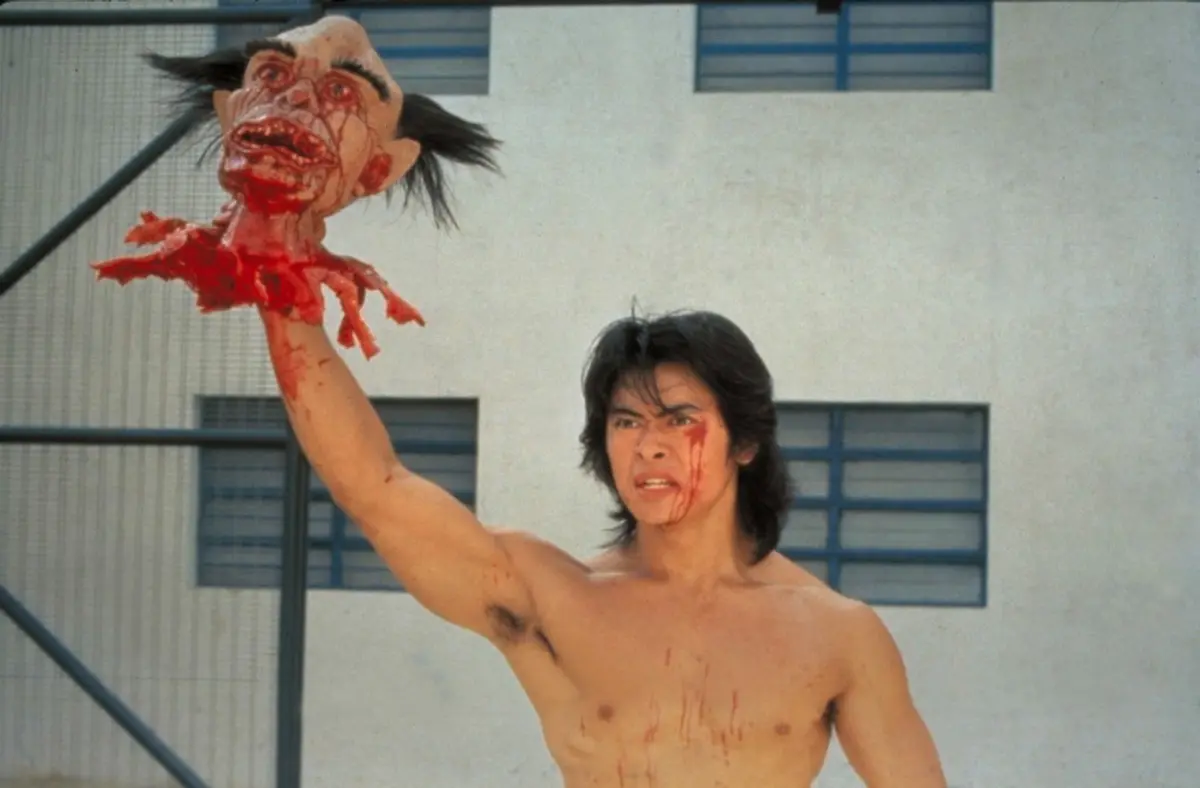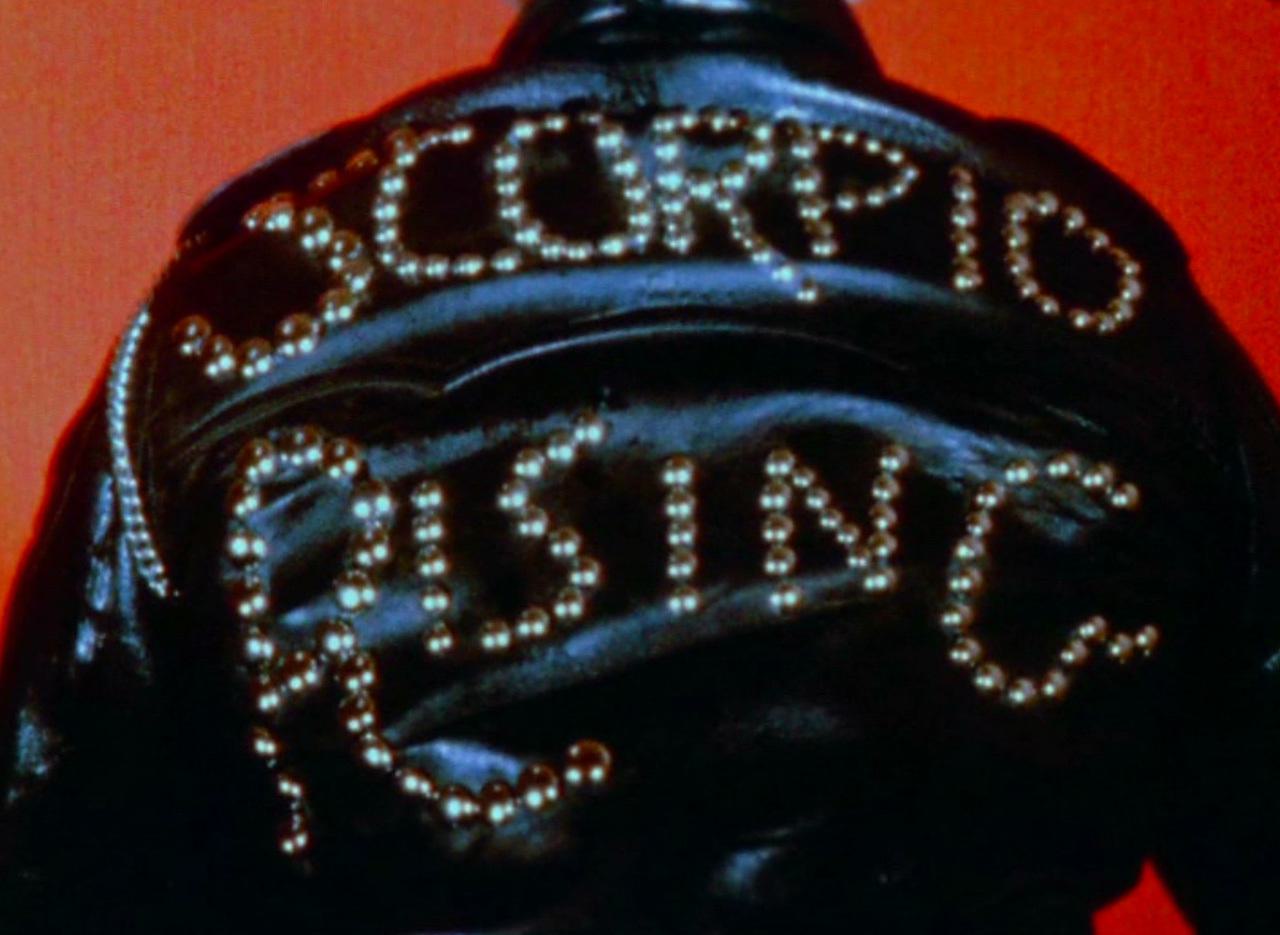by Millie De Chirico
The opening sequence to Gaspar Noé’s new film Climax is a montage of interviews framed inside an old, 1980’s style television.
The TV is on a shelf next to a giant pile of books and VHS tapes with the labels facing out. Most of the books are in French but a few author names pop out: Oscar Wilde, Kafka, Nietzsche. The VHS tapes to the right are more recognizable to fans of exploitation film, psychotronic film, underground cinema, whatever you want to call it. Three movies from 1977: Dario Argento’s Suspiria, David Lynch’s Eraserhead, and Pier Paolo Pasolini’s Salò, or the 120 Days of Sodom. It’s hard to even imagine these were all released in the same year considering their canonical status in the cult film community. In Climax, these movies sit beside each other as part of someone’s personal collection of transgressive art, possibly Noé’s own collection. I have seen these shelves before and have had these shelves before. They’re a secret handshake; the stuff that you discover as a young person that lead you down a long road of fucked up film.
Climax takes place in 1996, when I was seventeen years old and really getting into fucked up things myself. That year, I was still in high school out in the suburbs of Atlanta but managed to make a friend in the city named Laura, who was untouchably cool. She was the one who brought me to Blast Off Video for the first time, a very small VHS rental place in an alleyway in Little Five Points, a.k.a. the “cool” neighborhood. The owner was a middle-aged man who looked like Manfred Mann in the 60’s, exactly the guy you’d think of owning a video store nowadays. The whole place smelled like incense and the Herschell Gordon Lewis movie She-Devils on Wheels (1968) played on the television set hanging from the ceiling. Part of the store was organized by these really specific sub-genres: Nunsploitation. Kenneth Anger. Nudie Cuties. Plastered along the walls were posters of cult movies, cutouts of aliens from 50’s sci-fi, pictures of Bettie Page. It was like a clubhouse for anyone who liked weird shit and I wanted to live there.
In Atlanta, I remember paying a huge punk rock Mexican dude who worked the door at The Clermont Lounge $35 to make me a dubbed VHS copy of The Story of Ricky (1991).
Beyond Blast Off, cult film was never easily attainable knowledge for me. Especially as a woman and especially in a pre-internet world where the ritual of information sharing seemed to be passed down from the generation above (almost entirely male) and non-negotiable. Finding out about this stuff meant tracking down the places to hang out and listening to older men talk about what movies they did or didn't like, or sorting through the “Employee Picks” section at the video store. You were lucky if you had access to books like The Psychotronic Film Guide, Cult Flicks and Trash Picks, or Danny Peary's Cult Movies. Best case scenario, you had at least one great movie theater in your town that played repertory cinema.
Tracking down the even rarer stuff was such work. Mail ordering dubbed movies was the only way to access titles that weren’t rentable at the video store and you could only find out about them in the back of movie or music zines. In Atlanta, I remember paying a huge punk rock Mexican dude who worked the door at The Clermont Lounge $35 to make me a dubbed VHS copy of The Story of Ricky (1991). He walked around with a handwritten list of movies he owned that he could dub in his back pocket. It was a wild world back then.

When I started my career as a film programmer fifteen years ago, I was able to program this late-night, cult movie showcase Turner Classic Movies wanted to try. The spirit of the show, “TCM Underground,” was rooted in the concept of the downtown video store but also the overnight hours on television when weird stuff played for anyone who was awake at that hour.
On the shelves of Climax, I notice certain titles and start remembering what it was like to see these movies and program them for the first time. Noé has often referenced the film Angst (1983), a minute-by-minute account of a psychotic murderer enacting his latest crime as he narrates his own thoughts while it happens. The creative use of the camera (was there ever a body mount rig on a serial killer before this movie?), the moody lighting, the synthpop score. It’s hard to reconcile my feelings of loving this movie while knowing it’s so brutal. But its influence on Noé and other modern horror/thriller movies seems undeniable.


Another on the shelf is Andrej Zulawski’s Possession (1981), which I feel gets referenced a lot now, but is also just indescribable. Noé seems to pay homage to Zulawski in the scene where Selva (Sofia Boutella), in the throws of her LSD nightmare, thrashes herself along the walls and floor of the abandoned school. It reminds me of Isabelle Adjani’s famous “grocery smashing / miscarriage” scene down in the underground halls of the subway — there’s also a lot of pregnancy-based trauma in Climax.
Speaking of underground, I also noticed The Inauguration of the Pleasure Dome (1954), an amazing short film by the legendary gay experimental director Kenneth Anger. His movies, that are often colorful, mystical, and possessed, were impossible for me to find when I was growing up. I didn’t even see Scorpio Rising (1963) until after college, but had loved his book Hollywood Babylon, which at the time seemed incredibly salacious, really spilling the tea about these old movie stars people revered. Another film featured in Climax by a legendary gay director is Rainer Werner Fassbinder’s Querelle (1982). Querelle was Fassbinder’s last film before dying of a drug overdose and like Inauguration, is one of the most visually evocative films I’ve ever seen. Querelle and Climax also both make use of inter-title cards that break up scenes with some kind of philosophical statement.


Finally, Noé mentions another German director, Uli Edel, and his film Christiane F. (1981) towards the end of Climax when Psyché, the German dancer in the movie, is seen carrying a copy of the movie in her bag. Ironic when you consider Noé’s film is about one bad trip and Christiane F.’s main goal is to never make you want to do drugs for as long as you live. It’s gotta be the most shocking portrayal of teenage heroin addiction ever made; the two lead actors were actually underage when they made the film, just to add to its unsettling nature. Many know it because of David Bowie — his music is played throughout the film and he appears as himself in a concert sequence — but mostly it is just bleak. Not sure if music rights or sheer content is what makes Christiane F. still relatively inaccessible on home video in the US. I had a hard time tracking down this movie as I was writing this piece and for a minute, it felt like the good ole days.

